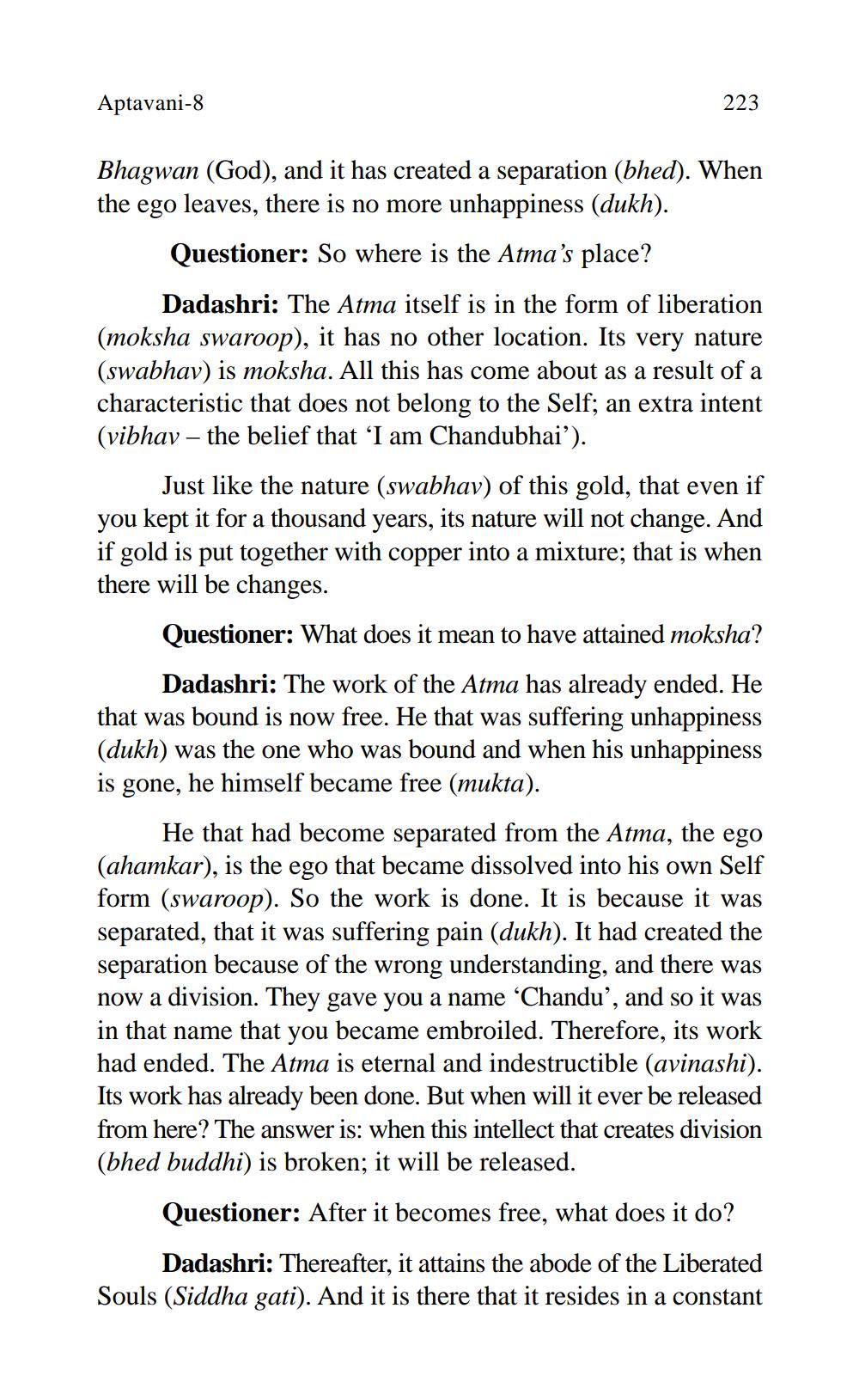________________
Aptavani-8
223
Bhagwan (God), and it has created a separation (bhed). When the ego leaves, there is no more unhappiness (dukh).
Questioner: So where is the Atma's place?
Dadashri: The Atma itself is in the form of liberation (moksha swaroop), it has no other location. Its very nature (swabhav) is moksha. All this has come about as a result of a characteristic that does not belong to the Self; an extra intent (vibhav – the belief that “I am Chandubhai’).
Just like the nature (swabhav) of this gold, that even if you kept it for a thousand years, its nature will not change. And if gold is put together with copper into a mixture; that is when there will be changes.
Questioner: What does it mean to have attained moksha?
Dadashri: The work of the Atma has already ended. He that was bound is now free. He that was suffering unhappiness (dukh) was the one who was bound and when his unhappiness is gone, he himself became free (mukta).
He that had become separated from the Atma, the ego (ahamkar), is the ego that became dissolved into his own Self form (swaroop). So the work is done. It is because it was separated, that it was suffering pain (dukh). It had created the separation because of the wrong understanding, and there was now a division. They gave you a name 'Chandu', and so it was in that name that you became embroiled. Therefore, its work had ended. The Atma is eternal and indestructible (avinashi). Its work has already been done. But when will it ever be released from here? The answer is: when this intellect that creates division (bhed buddhi) is broken; it will be released.
Questioner: After it becomes free, what does it do?
Dadashri: Thereafter, it attains the abode of the Liberated Souls (Siddha gati). And it is there that it resides in a constant




